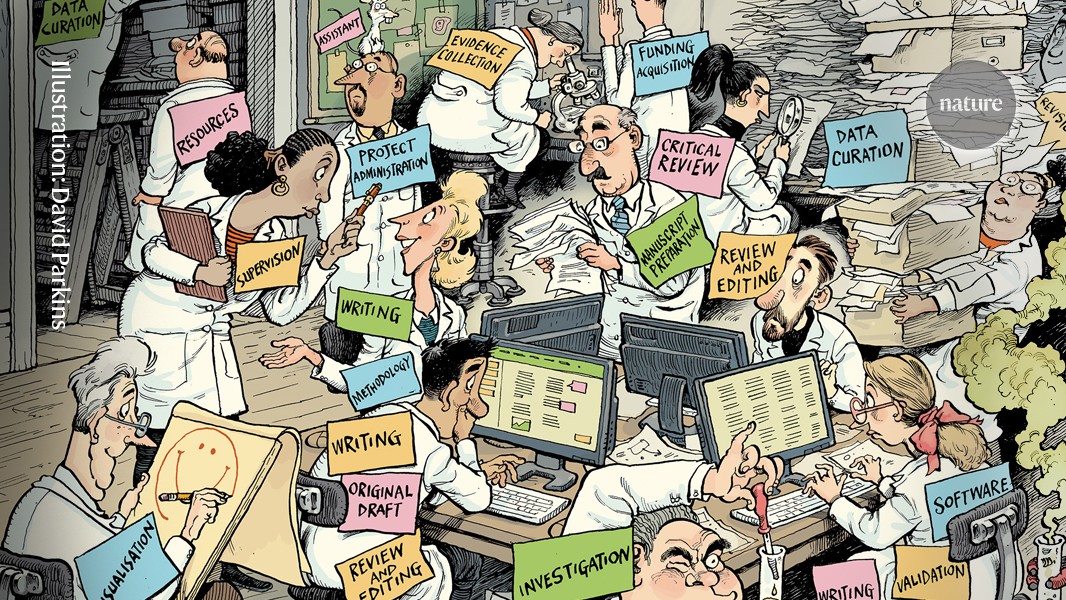
"A decade ago, we and others launched a tool for clarifying the roles of each author of a research paper. The Contributor Role Taxonomy (CRediT) includes 14 types of contribution, from conceptualization to software and data curation. It was designed to prevent questionable authorship practices and make it easier for researchers to demonstrate the diversity of their contributions to science, among other benefits."
"This year, taking stock, we've shown that adoption has risen steadily (see 'More CRediT is being given'). By 2024, CRediT information was included in nearly 850,000 publications (encompassing articles, preprints and conference papers) - around 22% of the 3.7 million publications recorded last year in Digital Science's Dimensions, a database of scholarly publications. This level of uptake is remarkable, given that there have been no coordinated efforts or mandates from publishers and funders."
"Despite widening use of CRediT, authorship conventions in scholarly publishing remain opaque and confusing, and differ by discipline. They typically provide little to no information about who contributed what in a study (see 'The parts we played'). A name's position in a list of authors is an unreliable indicator of the significance of that person's work or the time they spent,"
The Contributor Role Taxonomy (CRediT) defines 14 contribution types to clarify each author's role, from conceptualization to software and data curation. By 2024, CRediT data appeared in nearly 850,000 publications, about 22% of items recorded in Digital Science's Dimensions. The taxonomy aims to prevent questionable authorship practices and to make researchers' diverse contributions visible. Authorship conventions remain opaque, vary by discipline, and often fail to indicate who did what. Honorary authorship and ghost authorship persist, potentially affecting up to one-fifth of biomedical papers. Broader CRediT adoption is proposed to support research integrity across academia.
Read at Nature
Unable to calculate read time
Collection
[
|
...
]